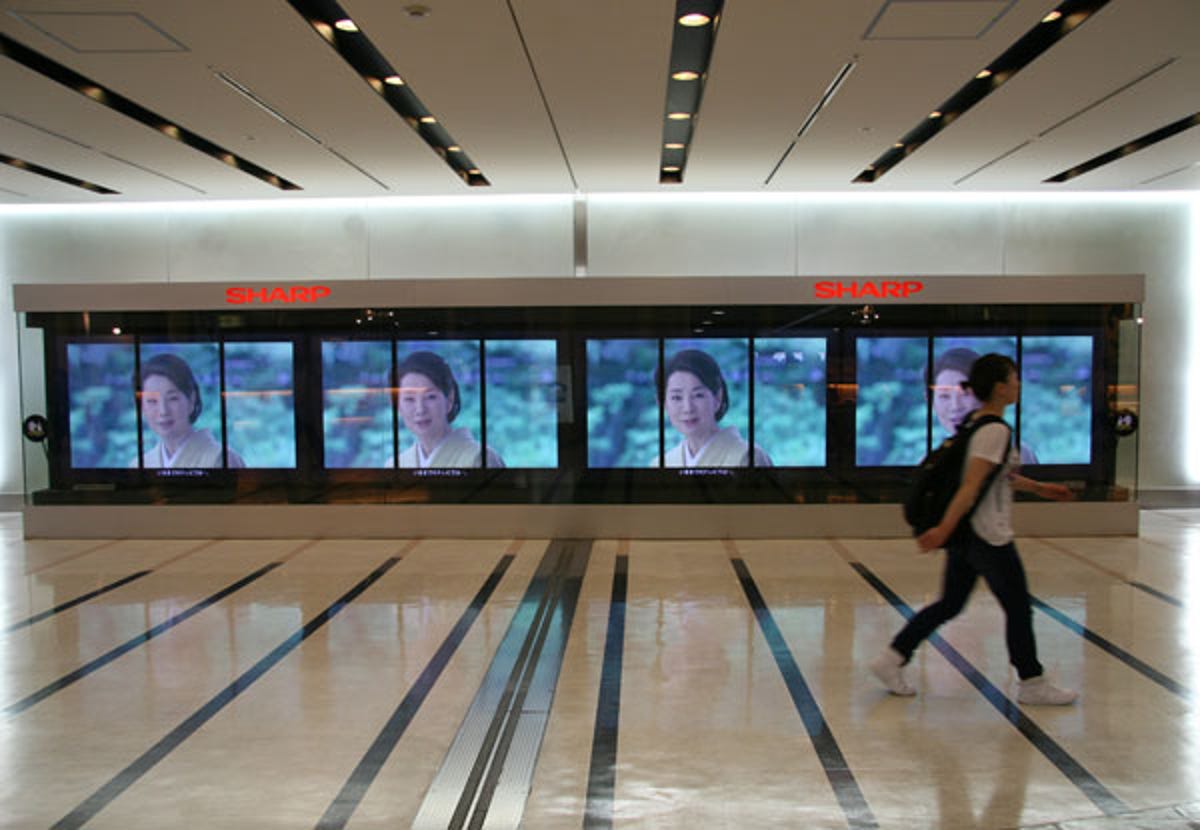Sharp reinvents LCD: behind the scenes
Get a sneak peek at how Sharp's new "four-colour" LCD is made in our behind-the-scenes look at the company's new factory.

Sharp has released its "innovative" new range of Quattron televisions in Australia, and to celebrate the company gave CNET Australia a look behind the scenes at its new LCD factory in Osaka, Japan.
The Quattron features a new LCD design that features a fourth colour alongside the 50-plus-year-old red, green and blue (RGB) standard: yellow. Sharp claims the addition of the fourth colour increases panel contrast as well as allowing a wider colour gamut.
The Quattron is a series of LED-backlit televisions, which comes in three sizes — 40-inch, 46-inch and 52inch. They feature a dynamic contrast ratio of 5,000,000:1 and uses the company's proprietary UV²A pixel structure.
Sharp was the first to release an LCD product way back in the early '70s, and has been developing LEDs since 1970 so the company sees Quattron as the culmination of 40 years of work.
But the company says it's not resting on its laurels: "There's more innovation beyond Quattron," said Sharp's executive officer Takashi Okuda.
Ty Pendlebury flew to Japan as a guest of Sharp.
Sharp Qauttron display at Narita Airport, Tokyo.
The three Quattron models (from left to right): LC52LE820X (AU$3999), LC46LE820X (AU$2899), LC52LE820X (AU$2299).
Sharp claims its Quattron "puts back" the missing yellow colour when an RGB-based camera records video. Given the poor reputation of most interpolating technologies, we are intrigued at how this works and whether better quality sources such as Deep Color will also feature "invented" yellows.
Compared against last year's CCFL backlit TV (left) the Quattron does appear to display more vivid yellows and deeper blacks.
Viewed under a microscope, the Quattron readily displays the four colours lined up against each other. Sharp says that because yellow lets through 30 per cent more light than the other colours combined it is better suited for technologies such as 3D.
Sharp showed off its 60-inch Quattron television, coming in late 2010/early 2011, which will not only feature 3D playback but also promises IPTV capability. A quick demo of 3D technology seemed to suggest it was less susceptible to crosstalk than some of its competitors.
The three Quattron models are available now, and feature the proprietary "four-primary-colour technology" plus a 100Hz motion-compensation mode.

Sharp's first LCD product — the electronic calculator — was released in 1973.
Sharp's LCD timeline:
- 1973: first LCD calculator
- 1987: portable 3-inch LCD TV
- 1995: 10.4-inch LCD TV
- 2000: 28-inch widescreen TV compatible with NHK's Hi-Vision broadcasts
- 2005: 65-inch, 1080-line LCD television
Industrial robots were used to handle Quattron glass. The yellow light is used because the pixel structures on the glass are developed like a photograph and white light would destroy them before they are "fixed".
The factory floor itself is completely automated and, according to Sharp, it is rare to see a workman on the floor. The factory is a category 10 clean room, which means there are only four foreign particles in a space that fills a football field. A single spec of dust can destroy one of the 2.88x3.13-metre sheets. Each sheet makes eight 60-inch panels.
The Green Front Sakai plant in Osaka is part of Sharp's future vision for a sustainable production plant. It's built on reclaimed land, uses recycled water, incorporates efficient LED lighting and will soon feature solar cells on the roofs — manufactured on-site.
The Quattron LCD structure in all its glory.

